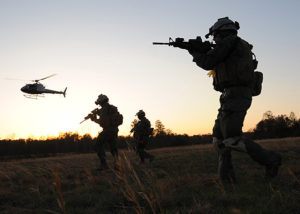
A DEA Foreign-Deployed Advisory and Support Team (FAST) on the ground in Honduras. Residents of Ahuas village, on the remote Miskito Coast, took to the streets in May to protest a deadly military-style drug raid, demanding the DEA leave their territory—and putting government offices to the torch to make their point. Miskito Indian leaders issued a statement declaring the DEA persona non grata in the territory. Four were killed—including two pregnant women—and another four wounded when DEA agents and Honduran National Police agents in a US State Department-contracted helicopter fired on a boat they apparently believed was filled with drug traffickers. Local residents say the victims were humble villagers who had nothing to do with drug trafficking.
In the 1980s—with wars raging in neighboring Nicaragua, El Salvador and Guatemala—Honduras was relatively stable under a military-dominated regime, and the US used it as a staging ground to police the entire isthmus. Today, it is Honduras that is slipping fastest into a new counter-insurgency, while it remains the US military beachhead for the region. While the “enemy” now is drug-trafficking rather than leftist guerilla subversion, the new US-backed militarization is convenient—at least—for repression of indigenous and campesino movements for land and dignity.
Photo: Drug Enforcement Administration
See full story…





